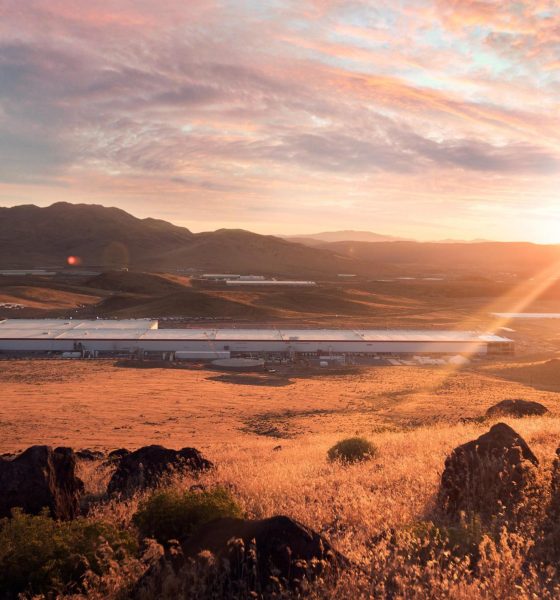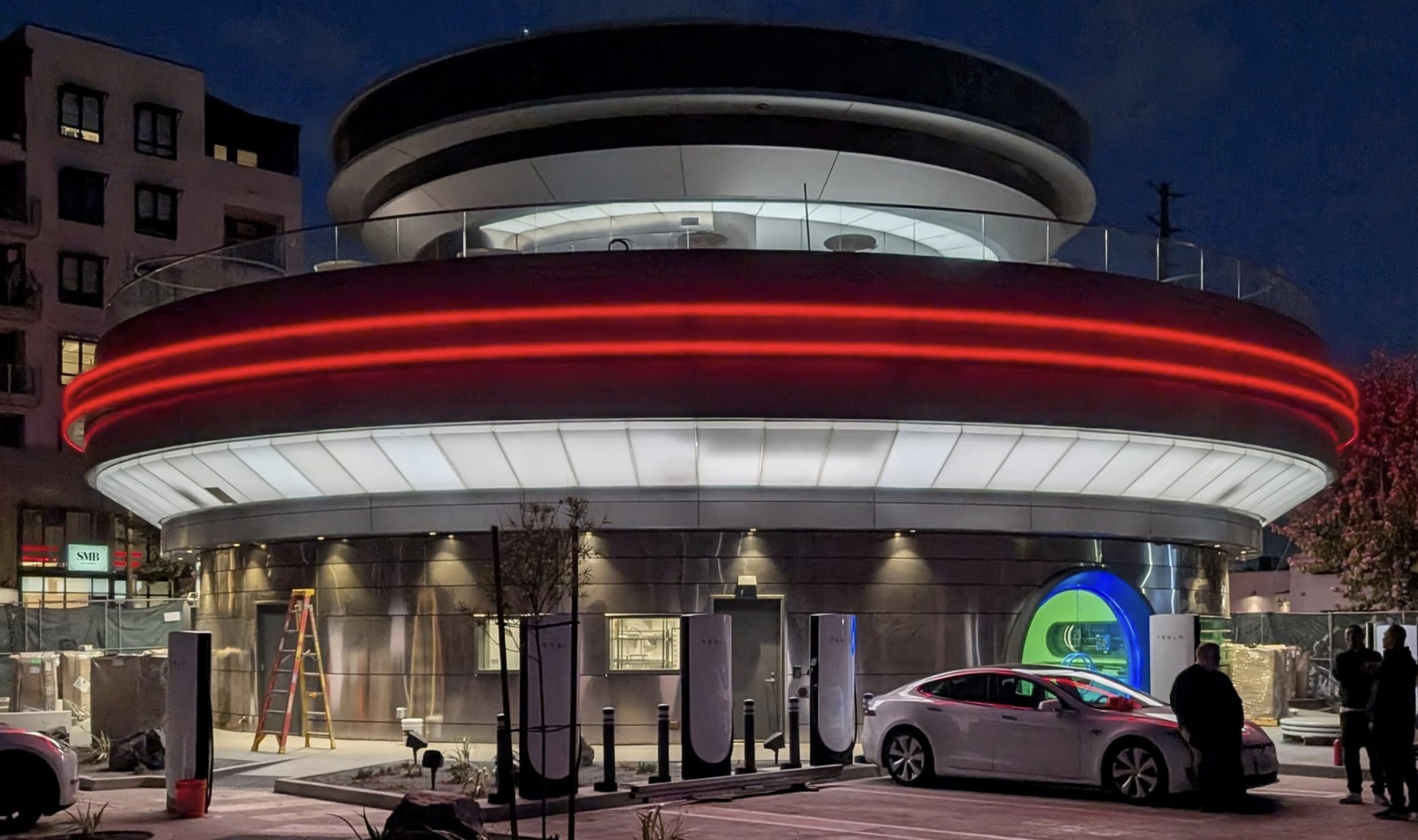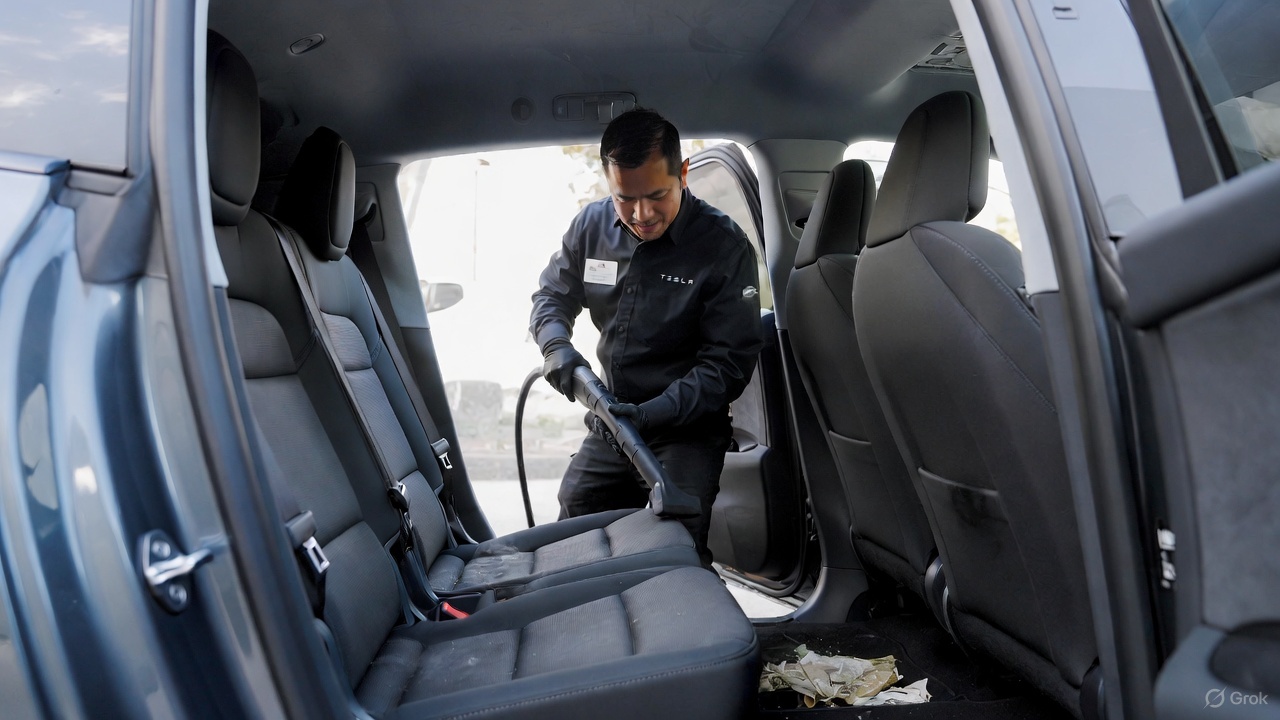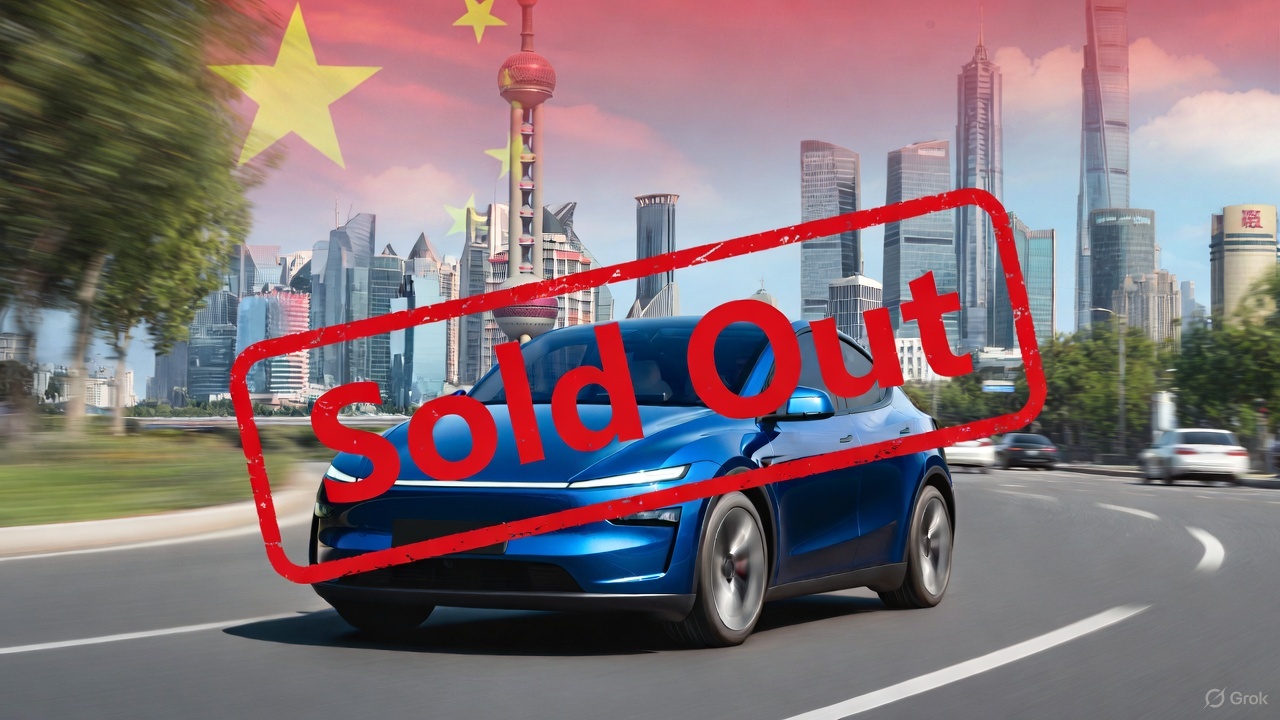

News
Tesla is looking to build on-site housing for Gigafactory 1 employees, says Elon Musk
At some point in the future, some employees working at Tesla’s Gigafactory 1 in Nevada would be able to simply walk or bike to their homes after a shift at the massive facility. Tesla is looking to expand Gigafactory 1, with Elon Musk recently stating during a conversation with NV Gov. Brian Sandoval that he envisions the company to hire more than 20,000 people for the factory. To help house this upcoming influx of workers, Musk noted that Tesla is looking to create an on-site housing compound in Gigafactory 1’s premises.
Tesla’s NV Gigafactory is less than 30% complete, but it already employs roughly 7,000 people. During a technology and innovation summit held at the factory on Tuesday, Elon Musk stated that in order for Gigafactory 1 to hit its target number of employees, the area needs to offer more infrastructure, such as schools, buildings, roads, and affordable housing. As a way to address the need for more housing units for Gigafactory 1’s future workers, Musk noted that Tesla is considering a project that involves building a housing compound for its employees.
“The biggest constraint on growth here is housing and infrastructure. We’re looking at creating a housing compound on site at the Gigafactory, using kind of high-quality mobile homes,” Musk stated.
Nevada’s real estate market was affected by the arrival of Gigafactory 1. The state of Nevada took a blow during the housing crash and recession, and by 2010, the state had a 14% unemployment rate, with more than 175,000 Nevada residents being unemployed. When Brian Sandoval became governor after winning the 2010 race, Nevada was ranked as one of the worst states in terms of bankruptcies and home foreclosures. To push the state’s recovery, Sandoval worked to attract tech companies to set up shop in the state. One of these companies was Tesla, which chose Nevada as the site for its Gigafactory 1.
Gigafactory 1 is located about 25 miles east of Reno, NV. For now, many of the facility’s employees live in Reno, as well as several surrounding cities linked to the battery factory via I-80 and the newly-completed Hwy 50, such as Carson City, Fernley, and Sparks. Real-estate prices in areas around Gigafactory 1 have risen over the past years. In Reno alone, the average monthly rent is now $1,318 per month, a 58% increase over rental rates six years ago. In the Reno/Sparks area, median home prices recently hit an all-time high, reaching $389,000 in July. Considering Musk’s new guidance, Gigafactory 1’s employees would almost triple once the facility is complete. Thus, there is definitely a need for practical, affordable housing around the facility.
It remains to be seen what type of housing Tesla would introduce for Gigafactory 1’s employees. That said, the housing initiative does go in line with some ideas that Elon Musk recently expressed. During his now-infamous podcast with Joe Rogan, for one, Musk teased the concept of a smart home with a more efficient air conditioning system. Musk’s side venture, The Boring Company, has also developed the Boring Bricks, which are designed as a cost-effective way to construct homes. Considering Elon Musk’s penchant for the creative, there is a good chance that Tesla’s on-site housing compound at Gigafactory 1 might feature some notable elements as well.
The concept of the mill towns, or settlements that are built around factories, have been around since the late 1800’s. In recent years, some of Silicon Valley’s most prominent companies have explored a rather similar concept. Last year, for example, Google and Facebook issued a proposal to build self-contained towns near their respective headquarters. These towns would feature amenities such as their own grocery stores, shops, cafes, movie theaters, gyms, and hundreds of apartments that can accommodate the companies’ expanding employee base. If Elon Musk’s words would prove to be true, it might only be a matter of time before a sort of “Tesla town” emerges just outside of Reno, Nevada.

News
Tesla Diner to transition to full-service restaurant as Chef heads for new venture
“I am leaving the Tesla Diner project to focus on the opening of Mish, my long-desired Jewish deli. Projects like Mish and the Tesla Diner require a sharpness of focus and attention, and my focus and attention is now squarely on Mish.”

Tesla Diner, the all-in-one Supercharging and dining experience located in Los Angeles, will transition to a full-service restaurant in January, staff said, as Chef Eric Greenspan said he would take on a new project.
A report from the Los Angeles Times says Greenspan confirmed through a text that he would leave the Diner and focus on the opening of his new Jewish deli, Mish.
Greenspan confirmed to the paper:
“I am leaving the Tesla Diner project to focus on the opening of Mish, my long-desired Jewish deli. Projects like Mish and the Tesla Diner require a sharpness of focus and attention, and my focus and attention is now squarely on Mish.”
Greenspan took on the job at the Tesla Diner and curated the menu back in March, focusing on locally-sourced ingredients and items that would play on various company products, like Cybertruck-shaped boxes that hold burgers.
Tesla Cybertruck leftovers are the main course at the Supercharger Diner
The Tesla Diner has operated as somewhat of a self-serve establishment, where Tesla owners can order directly from their vehicles through the center touchscreen. It was not exclusive to Tesla owners. Guests could also enter and order at a counter, and pick up their food, before sitting at a booth or table.
However, the report indicates Tesla is planning to push it toward a sit-down restaurant, full of waiters, waitresses, and servers, all of which will come to a table after you are seated, take your order, and serve your food.
It will be more of a full-featured restaurant experience moving forward, which is an interesting move from the company, but it also sounds as if it could be testing for an expansion.
We know that Tesla is already considering expanding locations, as it will be heading to new areas of the country. CEO Elon Musk has said that Tesla will be considering locations in Palo Alto near the company’s Engineering HQ, and in Austin, where its HQ and Gigafactory Texas are located.
Musk said that the Diner has been very successful in its first few months of operation.
News
Tesla adds new surprising fee to Robotaxi program
“Additional cleaning was required for the vehicle after your trip. A fee has been added to your final cost to cover this service. Please contact us if you have any questions.”

Tesla has added a new and somewhat surprising fee to the Robotaxi program. It’s only surprising because it was never there before.
Tesla shocked everyone when it launched its Robotaxi platform and offered riders the opportunity to tip, only to tell them they do not accept tips. It was one of the company’s attempts at being humorous as it rolled out its driverless platform to people in Austin.
As it has expanded to new cities and been opened to more people, as it was yesterday to iOS users, Tesla has had to tweak some of the minor details of the Robotaxi and ride-hailing platforms it operates.
First Look at Tesla’s Robotaxi App: features, design, and more
With more riders, more vehicles, and more operational jurisdictions, the company has to adjust as things become busier.
Now, it is adjusting the platform by adding “Cleaning Fees” to the Robotaxi platform, but it seems it is only charged if the vehicle requires some additional attention after your ride.
The app will communicate with the rider with the following message (via Not a Tesla App):
“Additional cleaning was required for the vehicle after your trip. A fee has been added to your final cost to cover this service. Please contact us if you have any questions.”
The cost of the cleaning will likely depend on how severe the mess is. If you spill a soda, it will likely cost less than if you lose your lunch in the back of the car because you had a few too many drinks.
This is an expected change, and it seems to be one that is needed, especially considering Tesla is operating a small-scale ride-hailing service at the current time. As it expands to more states and cities and eventually is available everywhere, there will be more situations that will arise.
The messes in vehicles are not a new situation, especially in a rideshare setting. It will be interesting to see if Tesla will enable other fees, like ones for riders who request a ride and do not show up for it.
News
Tesla Model Y sold out in China for 2025
Customers who wish to get their cars by the end of the year would likely need to get an inventory unit.

It appears that the Model Y has been sold out for 2025 in China. This seems to be true for the four variants of the vehicle that are currently offered in the country.
Tesla China’s order page update
A look at Tesla China’s order page for the Model Y shows a message informing customers that those who wish to guarantee delivery by the end of the year should purchase an inventory unit. This was despite the Model Y RWD and Model Y L showing an estimated delivery timeline of 4-8 weeks, and the Model Y Long Range RWD and Model Y Long Range AWD showing 4-13 weeks.
As per industry watchers, these updates on the Model Y’s order page suggest that Tesla China’s sales capacity for the remainder of 2025 has been sold out. The fact that estimated delivery timeframes for the Model Y Long Range RWD and AWD extend up to 13 weeks also bodes well for demand for the vehicle, especially given strong rivals like the Xiaomi YU7, which undercuts the Model Y in price.
Tesla China’s upcoming big updates
What is quite interesting is that Tesla China is still competing in the country with one hand partly tied behind its back. So far, Tesla has only been able to secure partial approval for its flagship self-driving software, FSD, in China. This has resulted in V14 not being rolled out to the country yet. Despite this, Tesla China’s “Autopilot automatic assisted driving on urban roads,” as the system is called locally, has earned positive reviews from users.
As per Elon Musk during the 2025 Annual Shareholder Meeting, however, Tesla is expecting to secure full approval for FSD in China in early 2026. “We have partial approval in China, and we hopefully will have full approval in China around February or March or so. That’s what they’ve told us,” Musk said.








